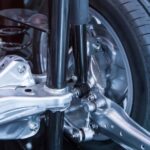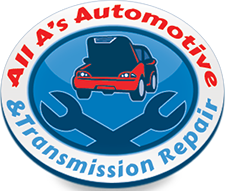When To Schedule Auto Suspension Service For Bad Shocks

 It’s easy to overlook the gradual changes in our vehicle’s suspension system. We adjust our steering to adapt to the extra sway, bounce, or roll. However, this compensation places additional stress on other suspension and steering components. If your vehicle’s ride quality has declined or you suspect bad shocks are affecting your auto suspension, continue reading for helpful tips to address the problem.
It’s easy to overlook the gradual changes in our vehicle’s suspension system. We adjust our steering to adapt to the extra sway, bounce, or roll. However, this compensation places additional stress on other suspension and steering components. If your vehicle’s ride quality has declined or you suspect bad shocks are affecting your auto suspension, continue reading for helpful tips to address the problem.
How Auto Suspension Works
Each component in the steering, suspension, and braking systems does specific things, yet they all work together to provide a safe driving experience. The different systems can be negatively affected if even one is damaged, worn, or otherwise working improperly. Let’s delve into these systems and components to learn a little more about them.
Auto Suspension System
The suspension system is supposed to keep your wheels squarely on the ground. When we experience issues with any part of the suspension (tires, shocks, struts, springs), the ride quality of our vehicle suffers. The overall handling or ‘out-of-control’ feeling when braking hard or turning sharp corners indicates that your car needs a diagnostic service.
Auto Steering System
The steering system allows motorists to direct their vehicles in the direction they wish to go. Steering can become less reliable when shocks and struts become worn or damaged. Issues like ‘car roll’ when turning, ‘nose dive’ when braking, and ‘swaying’ when driving straight indicate bad shocks or struts. These issues contribute to poor steering and cause unsafe driving conditions.
Shocks
The shock’s primary function is to control spring and suspension movements using a piston, piston rod, and valve filled with hydraulic fluid. It reduces bouncing, swaying, and excessive movements while braking, turning, and accelerating. When shocks work correctly, your vehicle can quickly respond to and recover from steering and braking actions. As with most moving components, the shock valves eventually wear out.
Struts
Struts are integral components within a vehicle’s suspension system. By design, they serve two functions: They provide structural support for the vehicle’s suspension and support the spring, plus they hold the tire in an aligned position. They also perform a similar function as the shock, absorbing excessive up-and-down movements through a piston, piston rod, and valve filled with fluid. Struts can also wear out and require replacement.
Strut Mounts
Strut mounts are like brackets with a flexible rubber center that attaches the strut to your car. They act as a cushion to reduce tire noise and road vibrations. Some strut mounts may contain a bearing or bearing plate that operates as a steering pivot. These bearings are essential components that can affect the response and steadiness of steering movement. Replacing strut mounts when replacing or upgrading the shocks and struts is a good idea.
Tires
Your vehicle’s tires provide traction, momentum, and comfort. When auto suspension is out of whack, you may see the results in your tire tread. A service technician should inspect excessive or uneven tread wear to determine the cause.
When To Schedule Auto Suspension Maintenance
You’ve heard the saying, “An ounce of prevention is worth a pound of cure,” and it really applies to auto maintenance. Unexpected vehicle repairs and part replacements can get expensive. Following your manufacturer’s recommended maintenance schedule can help prevent catastrophic part failure and vehicle damage. Additionally, schedule a diagnostic service when you notice a change in vehicle performance, handling, or efficiency.
Mileage Milestone or Replacement Intervals
Over time, your vehicle’s performance may decrease as your shocks and struts wear out. Following the factory-recommended maintenance schedule and replacing your shocks and struts when reaching 50,000 miles may help keep your vehicle driving like new. However, driving conditions, towing heavy loads, or performance upgrades may alter routine maintenance and replacement intervals. Consult your service technician to discuss your specific needs or concerns.
Ride Quality
If your ride quality has become rougher or you hear knocks when driving over bumps or while cornering, it is time to schedule a service. Your local service center can determine the cause and perform the necessary repairs or replacements.
Physical Wear or Damage
A physical examination of the suspension components may reveal a need for immediate repairs or replacements. Look for:
- Broken or damaged strut mounts
- Cracked springs
- Corrosion, rust, or gouges on shocks or struts
- Excessive rocking front-to-back, or rolling side-to-side while driving
- Knocking or rattling noises while turning or braking
- Leaking hydraulic fluid from the shocks or struts
- Uneven, excessive, or cupped tire wear
Auto Suspension Inspection, Service and Repairs
Understanding the role of shocks and struts in maintaining vehicle stability can help us respect the need for timely maintenance. All A’s Auto Repair is proud to provide quality auto suspension service, replace bad shocks, and track down why your ride quality has declined.
Schedule an Auto Suspension Service
Stop by our shop at 1300 S Poseyville Rd, Midland, MI 48640, call us at (989)631-4672, or visit our website to schedule your auto suspension service today!
Posted in: Suspension System
Leave a Comment (0) ↓
